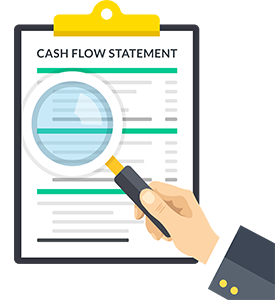Here are some ideas to lower your business taxes, get organized, and to prepare for filing your 2021 tax return.
 As 2021 winds down, here are some ideas to consider in order to help manage your small business and prepare for filing your upcoming tax return.
As 2021 winds down, here are some ideas to consider in order to help manage your small business and prepare for filing your upcoming tax return.
- Identify all vendors who require a 1099-MISC and a 1099-NEC. Obtain tax identification numbers (TIN) for each of these vendors.
- Determine if you qualify for the Paycheck Protection Program (PPP) safe harbor threshold that allows you to deduct certain 2020 expenses on your 2021 tax return.
- Consider accelerating income or deferring earnings, based on profit projections.
- Section 179, or bonus depreciation expensing versus traditional depreciation, is a great planning tool. If using Section 179, the qualified assets must be placed in service prior to year-end.
- Business meals are 100% deductible in 2021 if certain qualifications are met. Retain the necessary receipts and documentation that note when the meal took place, who attended and the business purpose of the meal on each receipt.
- Consider any last-minute deductible charitable giving including long-term capital gain stocks.
- Review your inventory for proper counts and remove obsolete or worthless products. Keep track of the obsolete and worthless amounts for a potential tax deduction.
- Set up separate business bank accounts. Co-mingling business and personal expenses in one account is not recommended.
- Create expense reports. Having expense reports with supporting invoices will help substantiate your tax deductions in the event of an audit.
- Organize your records by major categories of income, expenses and fixed assets purchased to make tax return filing easier.
- Review your receivables. Focus on collection activities and review your uncollectable accounts for possible write-offs.
- Make your 2021 fourth-quarter estimated tax payment by January 18, 2022.
As summer winds down, your business’s financial statements may be due for a quick check-up. Here are several review suggestions to help determine the health of your business prior to year-end.
- Balance sheet reconciliations. Reconcile each asset and liability account every quarter. A well-supported balance sheet can guide decisions about cash reserves, debt financing, inventory management, receivables, payables, and property. Regular monitoring can highlight vulnerabilities, providing time for corrective action.
- Debt service coverage. Do you have enough cash to adequately handle principal and interest payments? Calculate your cash flow to ensure you can handle both current and future monthly loan payments.
- Projected revenue. Take a look at your income statements and see how your revenue has performed so far this year versus what you thought your revenue was going to be. If revenue varies from what you expect, get with your sales and marketing team to pinpoint what has gone better, or worse, than expected.
- Projected expenses. Put a stop to disappearing cash by conducting a variance analysis of your expenses. What did you expect to spend so far in 2021 on salaries and wages compared to what you actually paid your employees? What about other big expenses like rent or insurance? Take the amount of money actually spent so far in 2021 in each of your major expense accounts and compare it to your spending forecast. Then create an updated forecast for the balance of the year.
A review of your financial statements now will help you be prepared if you need to navigate an obstacle or capitalize on potential opportunities to expand your business.
If you are concerned about protecting your valuables, here are several suggestions to consider for protecting them from would-be thieves:
- Rent a safe deposit box. It may make sense to keep seldom worn jewelry, coins and other important documents in a traditional safe deposit box at your local bank. But beware if you go this route, as it is often inconvenient to retrieve your valuables, it is easy to forget what is in the box and who has the key. Plus, it’s important to fully understand your rights under the contract terms.
- Install a home safe. There are several types of in-home safes you can choose from, including wall, floor, free standing, fire and gun safes. There are also diversion safes for small items that are designed to look like everyday household objects that can blend in with its surroundings.
 Secure your house. In addition to installing a state-of-the-art home security system, there are several other ways to physically secure your home. Consider updating your locks every several years, and remember to actually use them! Many burglars are looking for easy targets, and unlocked doors and windows provide easy access. Also consider reinforcing your doors and windows, and installing motion-sensing lights both inside and outside.
Secure your house. In addition to installing a state-of-the-art home security system, there are several other ways to physically secure your home. Consider updating your locks every several years, and remember to actually use them! Many burglars are looking for easy targets, and unlocked doors and windows provide easy access. Also consider reinforcing your doors and windows, and installing motion-sensing lights both inside and outside.
Be prepared if a theft does occur
Unfortunately, thieves can still sometimes steal your valuables despite multiple layers of protection. Here are some suggestions to prepare you if any of your valuables go missing:
- Be familiar with your insurance policy. Read your insurance policy to know what items are covered. Review your policy once a year or whenever you acquire another valuable asset.
- Get an appraisal. It may be difficult to know how much insurance you need without a proper valuation of your assets. Some assets may be worth much more than you think, while other assets may be difficult to pinpoint a value without professional assistance.
- Keep a home inventory. Create a list of all your valuables that includes photographs and purchase receipts. If an asset is stolen, having this inventory always up-to-date can help quickly jump-start filing an insurance claim.
The best way to weather a storm is often by being prepared before the storm hits. In the case of small businesses, this means building a fortress balance sheet.
What is a fortress balance sheet?
 This long-standing idea means taking steps to make your balance sheet shockproof by building liquidity. Like a frontier outpost or an ancient walled city, businesses that prepare for a siege—in the form of a recession, natural disaster, pandemic, or adverse regulatory change—can often hold out until the crisis passes or the cavalry arrives.
This long-standing idea means taking steps to make your balance sheet shockproof by building liquidity. Like a frontier outpost or an ancient walled city, businesses that prepare for a siege—in the form of a recession, natural disaster, pandemic, or adverse regulatory change—can often hold out until the crisis passes or the cavalry arrives.
Consider these suggestions for building your own fortress balance sheet.
- Control inventory and receivables. These two asset accounts often directly impact cash reserves. For example, carrying excess inventories can deplete cash because the company must continue to insure, store, and manage items that aren’t generating a profit. Also take a hard look at customer payment trends. Clients who are behind on payments can squeeze a firm’s cash flow quickly, especially if they purchase significant levels of goods and services—and then fail to pay.
- Keep a tight rein on debt. In general, a company should use debt financing for capital items such as plant and equipment, computers, and fixtures that will be used for several years. By incurring debt for such items, especially when interest rates are low, a firm can direct more cash towards day-to-day operations and new opportunities. Two rules of thumb for taking on debt are don’t borrow more than 75 percent of what an asset is worth, and aim for loan terms that don’t exceed the useful life of the underlying asset. A fortress balance sheet also means that debt as a percent of equity should be as low as possible. So, total up your debt, equity and retained earnings. If debt is less than 50% of the total, you are on your way to building a stronger foundation for your balance sheet.
- Monitor credit. A strong relationship with your banker can help keep the business afloat if the economy takes a nosedive. Monitor your business credit rating regularly and investigate all questionable transactions that appear on your credit report. As with personal credit, your business credit score will climb as the firm makes good on its obligations.
- Reconcile balance sheet accounts quarterly. It’s crucial to reconcile asset and liability accounts at least every quarter. A well-supported balance sheet can guide decisions about cash reserves, debt financing, inventory management, receivables, payables, and property. Regular monitoring can highlight vulnerabilities in your fortress, providing time for corrective action.
- Get rid of non-performing assets. Maybe you own a store across town that’s losing money or have a warehouse with a lot of obsolete inventory. Consider getting rid of these and other useless assets in exchange for cash.
- Calculate ratios. Know how your bank calculates the lending strength of businesses. Then calculate them for your own business. For example, banks want to know your debt service coverage. Do you have enough cash to adequately handle principal and interest payments? Now work your cash flow to provide plenty of room to service this debt AND any future debt! But don’t forget other ratios like liquidity and working capital ratios. The key? Improve these ratios over time.
Remember, the best time to get money from a bank is when it looks like you don’t need it. You do this by creating a fortress balance sheet!
 When tracking and planning your business objectives, it’s easy to focus your analysis on two reports — the income statement and balance sheet. But one of the primary keys to your business’s success relies more on how you handle the money flowing in and out of the business. The appearance of a solid profit can hide a lurking cash flow problem.
When tracking and planning your business objectives, it’s easy to focus your analysis on two reports — the income statement and balance sheet. But one of the primary keys to your business’s success relies more on how you handle the money flowing in and out of the business. The appearance of a solid profit can hide a lurking cash flow problem.
Here are practices to help you give your cash flow the attention it deserves:
- Understand your cash position. Start with simply getting in the habit of monitoring your bank account activity daily to watch for mistakes or unforeseen charges. Then look at each business process that involves cash — purchasing, inventory, collections and payroll are good examples. Consider extending terms for paying vendors, establishing shorter terms for customers to pay and implementing a review process to ensure accurate payroll calculations. Also explore opportunities to turn over your inventory faster.
- Create a cash flow statement forecast. With your knowledge of cash, create a forward-looking statement of monthly cash flow. It will reflect the ebbs and flow of cash throughout the year and identify times of cash crunch. You can then see the impact of changes you are making on your company’s cash position.
- Identify relevant ratios. There are many helpful cash flow ratios. Identify ratios that are especially helpful to your business. Have debt? Consider the cash flow coverage ratio (operating cash flow ÷ by debt) to help plan for scheduled debt payments. Making a lot of capital purchases? Use the free cash flow calculation (operating cash flow – capital expenditures) to determine how much cash will be left over after the purchases.
- Build in some contingencies. Most businesses experience seasonality. Understanding your business cycles can help you strategically manage cash in high cash months to cover shortfalls that come in low cash months. Set up a line of credit so it’s available in the case of an emergency, or as a bridge during short-term liquidity needs. A line of credit only charges interest only when used, so it’s a perfect tool to have at your disposal.
- Watch for hidden cash hijackers. Oftentimes, large cash expenditures can be hidden on your income statement or balance sheet. A few examples are payments on capital purchases, debt obligations, dividends, guaranteed payments to partners and taxes. Income taxes, when not accounted for correctly, can cause a twofold problem — a large lump sum that is due in a short amount of time, plus a larger obligation to account for going forward. Don’t wait until the end of the year to project your tax provision.
- Appoint someone to manage cash. As with many business processes, important details can fall through the cracks if there is not clear accountability as to who is responsible for the task. So assign yourself or someone you trust to manage the company’s cash flow.
When businesses fail, it’s usually because they run out of money. By making cash flow a central part of your business plan, you greatly reduce this risk.